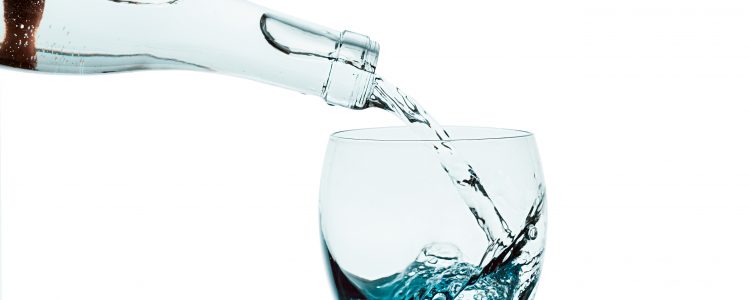Micro-plastic particles and bottled water

For many people, it was David Attenborough’s seminal documentary series ‘Blue Planet II ‘, that brought our plastic pollution to the forefront of our consciousness. Indeed he himself has said the outcry that followed the broadcast made the program ‘a job worth doing’.
Horrific as it was to see the devastating impact being wrought on innocent animals, few people realise that micro-plastic particles are ubiquitous in OUR environment, and their impact in terms of our health is yet to be fully realised.
Small, plastic particulate matter had already been found in beer and tap water, which is not surprising given that we know the oceans, rivers and estuaries are contaminated. But finding a worse scenario inside many bottles of ‘pure’ mineral water is surprising, and no doubt disappointing to those who for years have been forking out for expensive mineral water.
A recent study has analysed 259 bottles from 19 locations, in 9 countries, across 11 different brands, (including some hugely popular brands), and concluded 93% of bottled water was contaminated, so the numbers alone make the conclusion worrying, (although this study has not been subjected to peer-review). A huge variation in the amount of plastic was found, ranging between 0 and 10,000 particles per container of water, so whilst we know that plastics are now fairly ubiquitous in the environment, clearly some brands are able to live up to their marketing claims of selling ‘pure’ water, whilst others are failing.
So what are the health implications in consuming microplastics?
In truth, we only know from the results of animal studies that the process of digestion will result in some particles migrating through the gut wall, travelling to lymph nodes and organs, and penetrating the cell walls. We need a large scale human study to determine if similar happens in our guts, and what the bio-transformed end products might be. We need evidence that we do actually absorb such matter, and if – prior to any absorption – such micro-plastic has any impact on our resident gut flora, (which will not have encountered plastic in evolutionary millennia), or if such plastics/chemicals generate an inflammatory response from our gut associated immune system.
It would also be useful to determine where – if any such plastics do get absorbed – we end up storing them, as it’s probably safe to presume that our livers will not be able to conjugate and eliminate such inorganic particulate matter. Which organs or tissues end up storing it?
These last questions (gut flora, immune response and storage sites) are important and need investigating, because tap water also contains the same plastics – albeit in lower quantities, and many plastics contain toxic compounds like BPA, a well known hormone disruptor, as well as white vinyl chloride, and styrene monomers, shown to be carcinogenic.
My advice is – filter your own tap water, (because it’s better anyway to remove the heavy metals, chlorine, fluoride and pesticides), but in terms of efficiently filtering out microplastics – do your research on water filters. What size of particle does your choice of filter actually block and filter out? The smallest microplastic particle found in the bottled water by this study was measured at 2.5 micrometers, so your filter at least needs to be effective at that level.
